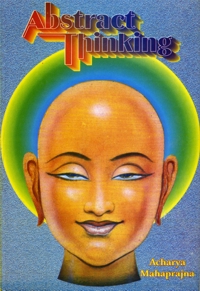
It is necessary for a sadhak to have a right view of the body. The body is the root of attachment. All the people are tied up with the body. If the attachment to the body is not dissolved, there can be no progress in sadhana. The bhavana of uncleanliness/impurity loosens this bondage and ultimately dissolves it.
Buddha has prescribed for it a complete exercise of body awareness. Buddha, while enumerating its salient features, says:
"O monks: The development of this religious bhavana is for controlling high passions, for general welfare, and for salvation: it is for total awareness and intuition, for the sake of joyful living here and now and for directly experiencing. Which religious bhavana? Body-awareness. 0 monks, those who make use of body-awareness, partake of nectar; those who do not make use of it, do not partake of nectar."
Describing the state of a monk engaged in body-awareness, Buddha says:
"He who conquers gloom and carnal passions is not oppressed by them. Again and again he scatters away the heart-sickness that arises. He can endure the heat and the cold. He joyfully accepts even extreme physical pain."
In Agama literature, too, the body is said to have originated from uncleanliness. Mahavira addressing Gautam says:
"Gautami: The body is disintegrating. The hair is getting grey. The body and its faculties are growing feeble. Perceive all this and do not be negligent even for a second."
However much the pitcher containing liquor may be washed, the smell thereof does not leave it quite. Similarly, however much the body may be washed clean, it remains impure. Every moment, through various doors, impurities flow out. The unwise put upon the body the mantle of purity, but the wise are fully conversant with the reality of it. The sadhak should rightly observe the body and rooting out all attachment, should get established in his own true nature. Although the body is impure, unclean, it is also the temple of god. After having viewed the uncleanliness, and after shedding off all attachment, the sadhak should also observe the wholly-pure, ancient soul within. Mere intensification of the feeling of contempt for the body will not serve any purpose.
The beauty of the outward establishment of the material particles creates attachment in the mind. What is inside the skin is not very attractive. To become acquainted with the inner reality along with the outward formation, to view it objectively becomes a factor of detachment. A view of the unclean matter abiding in the body combined with the foul smell emanating from the body at death quite dispels one's infatuation with the body. That is the purpose of the bhavana of uncleanliness.
It has been said in Acharanga:
"Outwardly, the body is what it is inside; inwardly, the body is what it is outside.... A man views the unclean body from the inside and he also observes various streams flowing within."
Some philosophers lay stress on the purity of the mind, others emphasise outward cleanliness. A partial, one-sided point-of-view is not acceptable to Lord Mahavira. He considered both view-points simultaneously and said:
"The purity of the mind alone is not adequate. The outer behaviour should also be pure. It is the culmination of the inner state. Likewise, the purity of the outer behaviour alone is not adequate. Without inner purity of the outer behaviour alone is not adequate, without inner purity it becomes mere repression. Therefore, the mind should also be pure. The perfection of religious life lies in both inner and outer purity together.”
An important means of freeing the mind of lust is a full view of the uncleanliness of the body, the foulness of it.
Imagine an earthen pitcher full of excrement: The excrement is flowing out of it. That pitcher is foul, within and without.
This physical frame, the pitcher of the body is also full of defilements. The foulness oozing out of it renders the outside also unclean.
There are to be found here blood, flesh, fat, bone, marrow, semen. The sadhak contemplates them deeply.
There are many cavities in the body. The sadhak observes them all - the cavity of the stomach (the navel), the ear-pits, the sinus, the pores of the right hand and side, the pores of the left hand and side, and other cavities. The perception of these cavities makes him acquainted with the real nature of the body. His lust grows quiescent.
 Acharya Mahaprajna
Acharya Mahaprajna

